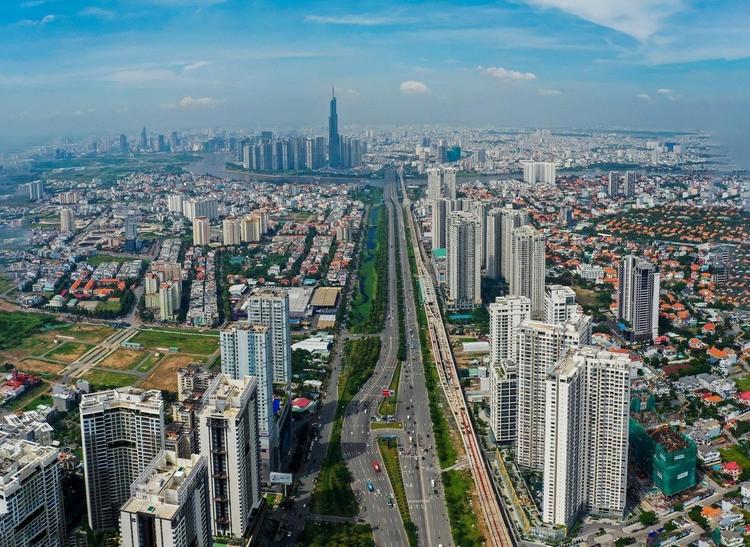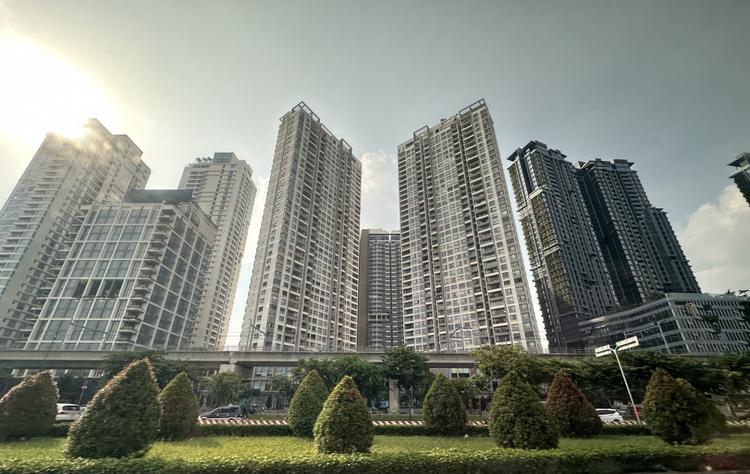The model of urban development associated with public transport (TOD) has become a market trend in recent years, leading to a wave of real estate projects springing up around metro lines in Hanoi and Ho Chi Minh City. This boom opens up great opportunities but also poses certain challenges.
The Trend Is Booming From Hanoi To Ho Chi Minh City
In just the past few years, the Transit-Oriented Development (TOD) model – urban development associated with public transport systems – has become a notable keyword in the Vietnamese real estate market. In Hanoi and Ho Chi Minh City, a series of projects have been and are being implemented in the direction of taking advantage of metro lines and belt roads, creating a clear shift in planning as well as investment strategy.

According to a survey by Batdongsan.com.vn, in Ho Chi Minh City, where metro line 1 Ben Thanh – Suoi Tien is in operation, real estate values along the metro corridor have increased significantly. The price level of projects within a 500m radius around the metro station has increased by 30-40% compared to the same period last year. Some typical projects benefiting from the development of this model include The Privé, Fresia Riverside, Masteri An Phu, Lumière Riverside, The Metropole Thu Thiem, Empire City… Not only Ho Chi Minh City, Hanoi is also entering a breakthrough phase with TOD. The revised Capital Law and the new Land Law create a legal corridor for the city to deploy TOD zones associated with urban railway lines. According to the orientation, Hanoi will form high-density urban areas around stations, synchronizing commercial, office and housing facilities to reduce traffic pressure in the center. In fact, the selling price of some projects near the Nhon – Hanoi Railway Station metro line, Ha Dong – Cat Linh metro line and areas connected to Ring Road 3 and Ring Road 4 have grown impressively in price in recent years, reflecting the attraction of this model. Some typical projects include Golden Land, Ho Guom Plaza, New Sky Line, Westa, Discovery Complex, Indochina Plaza, etc.
It is undeniable that the proliferation of projects “following” the TOD model brings many benefits: increasing real estate value, improving the quality of life thanks to diverse amenities, and promoting the habit of using public transport. Especially, in the context of Hanoi and Ho Chi Minh City facing congestion, air pollution and population pressure, TOD is expected to become a long-term solution to the problem of sustainable urbanization. The explosion of projects around the metro and belt not only opens up new investment opportunities but also forces the market to move towards a standard of civilized urban development, closely linking transport infrastructure and living space.
Challenges in Real Estate Development According to TOD Model
Becoming a major trend of Vietnamese real estate with the expectation of reducing infrastructure load, improving quality of life and creating momentum for economic development, TOD is considered the “golden key” for modern urban areas. However, behind the prospect, according to Associate Professor, Dr. Nguyen Vu Phuong, Deputy Director of the Academy of Strategy and Training of Construction Cadres (Ministry of Construction), many limitations and challenges have been revealed, requiring the need to view TOD not only from the perspective of real estate profits, but also as a sustainable social governance tool.

According to Associate Professor Dr. Nguyen Vu Phuong, in reality, many real estate projects associated with transport infrastructure in Vietnam are implemented when the main infrastructure is still lacking, leading to a situation of “local overload”. Many urban areas are densely built around major routes, while auxiliary connecting routes such as parking lots, shuttle buses, and walkways have not been invested in synchronously. This makes TOD only stop at the “promotional concept” rather than a real operating model.
Another bottleneck is the neglect of essential segments. While the demand for social housing, worker housing or student dormitories in big cities is very high, the number of projects is very modest. Enterprises mainly focus on the high-end segment, creating a local surplus, while the supply of affordable housing is scarce. This unbalanced product structure not only makes the market easily “out of sync” but also goes against the fairness philosophy that TOD aims for.
In addition, the exploitation of land value from the TOD model has not been as effective as expected. In many countries, the increased land value around the infrastructure will be reinvested back into the community, helping to maintain social equity. However, in Vietnam, this mechanism is still loose, leading to the situation where land around metro stations or along highways mainly falls into the hands of commercial enterprises, while the land fund for social housing is increasingly narrowing. This creates the risk of deviating from TOD, turning urban development tools into “privileges” of some interest groups.
In addition, if real estate continues to develop in the TOD direction but lacks a control mechanism and connection with social strategy, negative consequences may erupt. First of all, the rich-poor gap is increasingly evident. Areas near metro and highways are at risk of becoming “privileges” of the high-income class, while workers, employees, and students are forced to move away from the center. The result is increased travel costs, longer travel times, and a significant decline in quality of life.
On the other hand, the misalignment in product distribution also undermines social equity. When TOD mainly serves high-end real estate, the majority of urban residents are limited in their access to affordable housing. This is not only an economic inequality, but can also become a source of long-term social instability.
In addition, the market also faces the risk of a real estate bubble. Reality has shown that whenever there is information about infrastructure planning such as metro, highway or beltway, land prices around the area immediately “jump”. However, if there is no mechanism to redistribute benefits to the community, this price increase can easily become a “virtual land fever”, inflating the value without being linked to real demand. Once the bubble bursts, not only will individual investors suffer losses but it will also threaten the financial stability of the country.
“Obviously, TOD brings many opportunities, but if developed uncontrollably, this model can have the opposite effect. The problem for Vietnam is how to turn TOD into a balanced mechanism: both promoting the economy and ensuring social equity,” Associate Professor Dr. Nguyen Vu Phuong emphasized.
